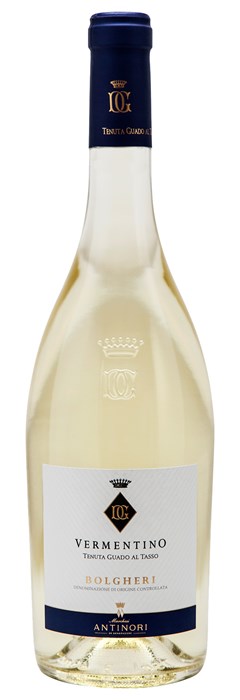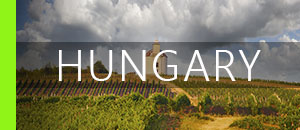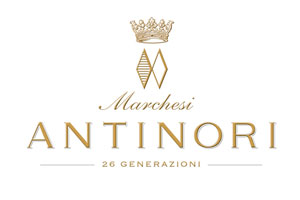Antinori
A history since 1385 and a "double sprit" philosophy: Tradition and Innovation
History of Antinori
In 1385, the Antinori family became part of the wine business when Giovanni di Piero Antinori joined the Florentine Vintner's Guild.
Since 1966, Marchese Piero Antinori, son of Marchese Niccolò, has run the company with his daughters, Albiera, Allegra and Alessia, also playing an active role.
For more than 26 generations now, Antinori's philosophy has been based on the combination of both tradition and innovation: to preserve Italy's enological traditions and to experiment innovation in winemaking, giving each wine tester the pleasure of discovering a unique alliance.
Vineyards
Each of Antinori's vineyards and estates has its own individual character, its own history and its own universe perceived and discovered in the tasting of each of their fine wines.
Badia a PassignanoAntinori's vineyards for red wine are mostly located in Tuscany, in the area of Chianti Classico where it owns three estates, total 575 acres: Tignanello, Pèppoli and Badia a Passignano.
White wine is produced in Umbria in the Orvieto Classico region, at Castello della Sala estate, and in Tuscany at Monteloro estate.
Red wine comes from the Montepulciano, Bolgheri, Montalcino, Castiglione della Pescaia and Sovana areas.
Besides Tuscany and Umbria, Antinori is also present in Lombardy, Piedmont, Apulia, California, Washington State, Hungary and Malta where it produces both red and white wines.
The Tignanello and Solaia Estate - The uniqueness of a land and the history of a great wine
The Tignanello estate is a total of 319 hectares in size of which 127 hectares are planted with vines. In particular, two vineyards are real treasures:
- Solaia: 20 hectares
- Tignanello: 57 hectares
The area is very particular due to the high altitude being over 400 metres above sea level, the vineyards having a southwest exposure to the sun, the microclimate and the soil, which is marine loam based with a rich addition of alberese and galestro rock dating back to the Eocene and Miocene eras.
Viticulture
The growing season here is characterized by hot days and cool nights.
In the early 1970ies, the Tignanello estate was, to some extent, the viticultural research ground for Antinori. Investigations into vine growing concentrated on the improvement of the grapes to obtain a higher concentration and softer tannins. This was achieved through planting density, foliage control and selection of the Cabernet and Sangiovese.
In the oenological field, the goals were to achieve wines with a well-defined character.
This was accomplished by a rigorous selection of the grapes during harvest and when received at the winery, gentle crushing of the grapes with as little stress as possible, and by allowing malolactic fermentation to occur in barrel.
When the first production of Solaia began, more than thirty years ago, the grapes came from a plot of land that was within the larger Tignanello vineyard. The same particular characteristics as the original vineyard, such as the altitude, the soil type and the good exposure to the sun (hence the name Solaia), are also found in a nearby vineyard. This vineyard has been integrated into the original vineyard since 1997.
Currently, the Solaia vineyard is 20 hectares and planted with Cabernet Sauvignon (15 hectares), Cabernet Franc (1 hectare) and Sangiovese (4 hectares) with an average age of 15 years.
The density per hectare varies from a minimum of 5,500 to a maximum of 7,200 and the low-spurred cordon training system is used. Over the years, there has been a progressive renewal of the Solaia vineyard. This has been accomplished by utilizing the many years of knowledge and ever-increasing experience of the estate's land to highlight the personality of Solaia.
|
Italy

Antinori
Guado al Tasso Vermentino
2024
Antinori Guado al Tasso Vermentino is a vibrant white wine from the prestigious Bolgheri DOC, offering an exceptional expression of the Mediterranean terroir. With its aromatic complexity and fresh citrus character, it’s a perfect match for lovers of refined and elegant white wines.
Guado al Tasso Vermentino
2024
24,90 €
|




















